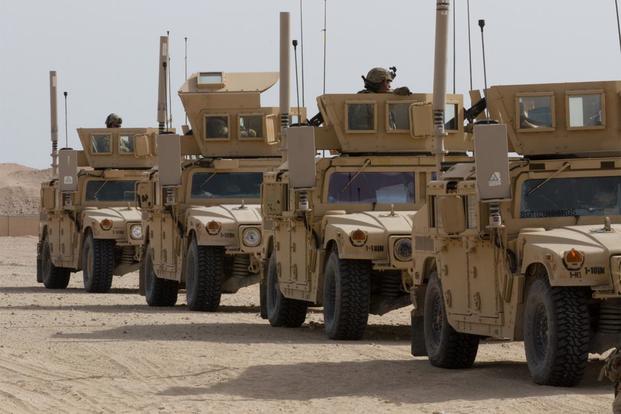U.S. Army modernization officials defended the rapid prototyping strategy for the service's Mobile Protected Firepower (MPF) system, even though infantry units won't receive the new light tank until 2025.
The Army announced Monday that it awarded contracts to General Dynamics Land Systems Inc. and BAE Systems, worth up to $376 million each, to produce prototypes of the MPF.
The two companies will each build 12 prototypes so the Army can begin testing them in early 2020. The goal is to down-select to a winner by fiscal 2022.
"We are excited about this opportunity," Maj. Gen. Brian Cummings, head of Program Executive Office Ground Combat Systems, told reporters at the Pentagon. "We have an aggressive schedule to take a look at these two companies as they build the prototypes."
GDLS and BAE beat out SAIC and its partner, ST Engineering Land Systems Ltd., but Army officials would not comment on the reason the winners were chosen.
Service officials lauded the contract awards as a major step forward in streamlining Army acquisition and said they plan to use the rapid prototyping approach as a model for future programs.
But even if the Army in 2022 selects one of the companies to build production MPF systems, it likely will take another three years before the service will field the first of 504 of these lightweight tanks to infantry brigade combat teams.
Army officials said it would take longer to field the MPF if they hadn't used what's known as "Middle Tier Acquisition Rapid Prototyping (Section 804)" contracts, an acquisition tool designed to streamline testing and development of prototypes.
The process is quicker than other acquisition procedures in that the MPF program will not use time-consuming preliminary and critical design reviews to ensure that platforms meet requirements, Army officials explained.
"For a new system, [going through that process] could add as much as a year-and-a-half to two years onto the whole cycle," said David Dopp, Mobile Protected Firepower program manager, adding that the Army is pleased it will take just 14 months for GDLS and BAE to produce the 12 prototypes each.
"Fourteen months is very challenging. I don't think you can find another program that ever got prototypes in 14 months," he said. "When you build these vehicles and you put them together, [sometimes] they don't work, or if they do work, we take them out and test them, and there are things that happen, and we need that time to prove it out."
Brig. Gen. Ross Coffman, director of the Next Generation Combat Vehicle Cross Functional Team, said the Army will use the 14 months to get a headstart on figuring out how infantry units will utilize the MPF to destroy enemy bunkers and other hardened battlefield positions.
"Right now, we are doing experiments and tactical training at Fort Bragg, North Carolina, with vehicles that have a similar profile of the Mobile Protective Firepower to develop tactics, techniques and procedures for the light forces to work with mechanized vehicles in the close fight," he said.
The MPF concept emerged several years ago when maneuver leaders started calling for a lightweight, armored platform for light infantry forces equipped with a cannon powerful enough to destroy hardened targets.
Since then, the MPF program has been placed into the Next Generation Combat Vehicle, or NGCV, portfolio, the second of the Army's six modernization priorities that fall under the responsibility of the new Army Futures Command.
Coffman said he was pleased with the MPF's progress, calling it the "first NGCV major decision that's come out, as far as procurement actions."
"If anything needs to be changed, we are not afraid to do it," he said. "We want what is best for our soldiers as fast as we can get it."
-- Matthew Cox can be reached at matthew.cox@military.com.










